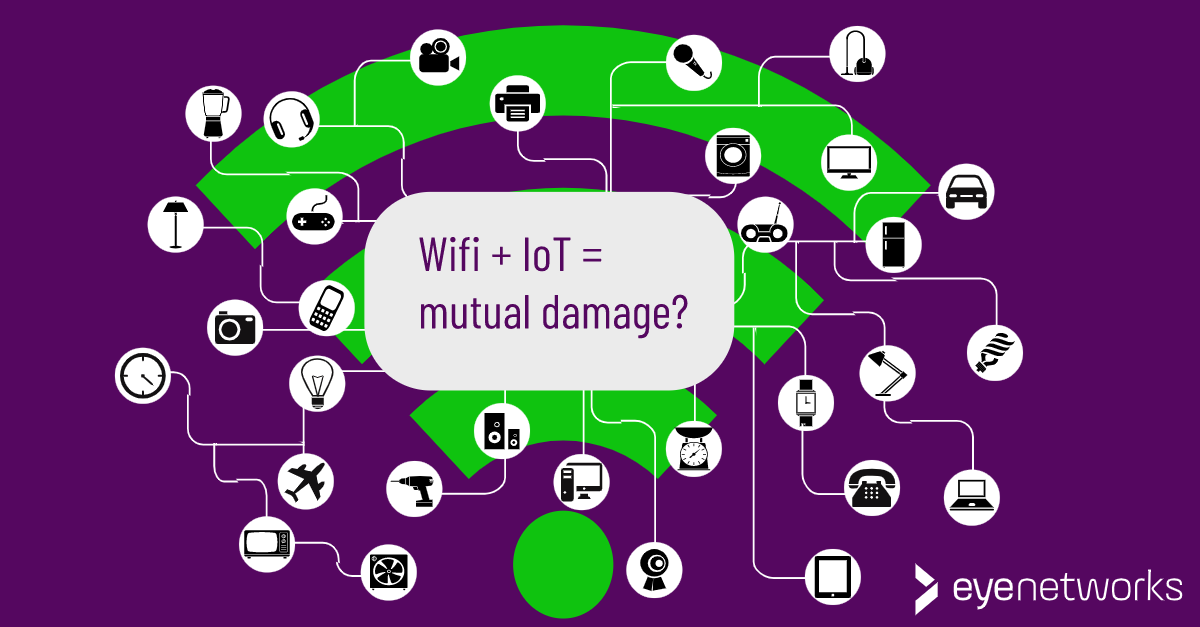Will wifi and Internet of Things technologies like Zigbee, Z-Wave and Bluetooth hurt each other’s performance? Wifi experts Josef Noll and Isabelle Tardy answer.
Will home wifi and Internet of Things wireless standards such as Zigbee, Z-Wave and Bluetooth hurt each other’s performance in the future? How can it be avoided?
Isabelle Tardy responds: Everything is developed in silos, someone has to coordinate
The connected home or “smart home” should preferably have several applications. This includes security (such as alarms), automation of functions (such as heating), automatic electricity meters (AMS), e-health and help for the elderly and chronically ill, as well.
Small amount of data and high quality requirements
In contrast to mobile broadband applications, some of these applications have low data rate requirements – there are not large amounts of data that need to be transferred – but, on the other hand, a low tolerance for packet loss. This means that the information must arrive, and you must have a certain guarantee that it arrives intact. It is very important that information is correct to avoid wrong decisions in operations, and that the customer loses confidence in the application provider.
Most home applications will choose ISM bands in the 2.4 and 5.8 GHz bands, since many wireless technologies operate on these unlicensed bands. It includes the IEEE 802.11 variants, Bluetooth, security cameras, ZigBee, wireless keyboards, and more.
Silo development of applications
Applications have traditionally been developed in silos. Behind each of these applications there is an industry that operates almost completely independently of existing infrastructure. This can result in several applications using the same channels or neighboring channels, without there being any local, superior system that can handle priorities.
Various research work on cognitive radio has analyzed methods to be able to avoid this situation through having “smart” access to channels and adaptive use of channels. There are several degrees of how smart such a flexible radio system can be. It can be “spectrum agile” (with terms such as dynamic spectrum access), and it can also learn from the electromagnetic environment around it to be able to adapt automatically to channels that are free or have little use.
Possible solution: A central, coordinating unit
A home spectrum manager would be a central unit, possibly on a dedicated radio channel, that tracks activity on the frequency bands. This separate monitoring system will have a dynamic map of the various wireless devices in the home, showing the use of different frequency bands at all times, and a central controller with local network intelligence to be able to make the right decisions. In order to support the coexistence of several otherwise uncoordinated systems, such a manager will have to:
- Allocate spectrum so that interference on the same channel and neighboring channels is minimized.
- Follow a priority list or fairness algorithm.
- Allocate two neighboring channels to greedy applications.
- Regulate transmitted power and data rate.
- Time manage applications and put some on a “waiting list”.
Some products along these lines have been launched, but mainly for the business market. The features of a home controller should preferably include
- Smart selection of networks and frequency bands based on the end user’s preferences.
- Traffic management to possibly route different traffic so that collisions are minimised.
- Seamless authentication (all silo systems essentially belong to the same person).
- Quality (Quality of Experience) that dynamically takes care of network load and device performance.
Josef Noll responds: Wi-Fi is Worse for IoT than Vice Versa
All wireless systems transmit information on given frequencies. Zigbee, Z-Wave and Bluetooth use the same frequency range as wifi, the so-called ISM band at 2.4 GHz. Basically, we can therefore expect a limitation of the performance.
Internet of Things standards are adapting
But IoT standards such as Bluetooth are adaptive, which literally means they adapt. If you have a router that transmits on channel 1, Bluetooth will transmit on channel 6 or higher. The reason for this is that IoT communication is more disrupted by wifi than wifi is disrupted by IoT communication.
Wifi makes the most noise by itself
Everything that takes place in the same ISM channel contribute to limiting performance reciprocally. The biggest limitation comes from other wifi devices working on the same channel or on a neighboring channel. In the ISM band we have 13 channels, of which only 3 channels (1,6 and 11 or 13) do not interfere with each other.
For example: If your router transmits on channel 1, and your neighbor’s router transmits on the same frequency, both the routers and gadgets on the two networks will interfere with each other. This interference decreases more and more if your router switches to channel 2, 3, or 4. There is reasonably little interference between channel 1 and channel 5, but from channel 6 onwards there is no interference with data coming from channel 1. In densely populated areas it is often not possible to transmit only on channels 1, 6, and 13. Here you have to weigh the trade-offs as far as interference. You have the least interference by setting up the router so that it uses a channel that is very weak.
Other frequencies for other systems
Other wireless systems, such as automatic power meters, send information on completely different frequencies, usually 433 MHz or 868 MHz. These frequencies are not used by wifi, and thus will not harm performance. The disadvantage is that 433 and 868 MHz have very limited bandwidth, and therefore cannot support a lot of traffic.
Meet the Experts
Professor Josef Noll, UiO

Josef is a specialist in wireless and mobile networks and security, employed by the Department of Informatics at the University of Oslo. Advocates for public Internet access as head of the Basic Internet Foundation . Also heads up the research project IoTSec-Security in IoT for Smart Grids.
Senior researcher Isabelle Tardy, SINTEF

Isabelle is a specialist in radio communication and network architecture and a senior researcher in SINTEF’s department for communication systems. She has many years of experience with Norwegian and international network research and leads the national project 5G-Special Interest Group .
